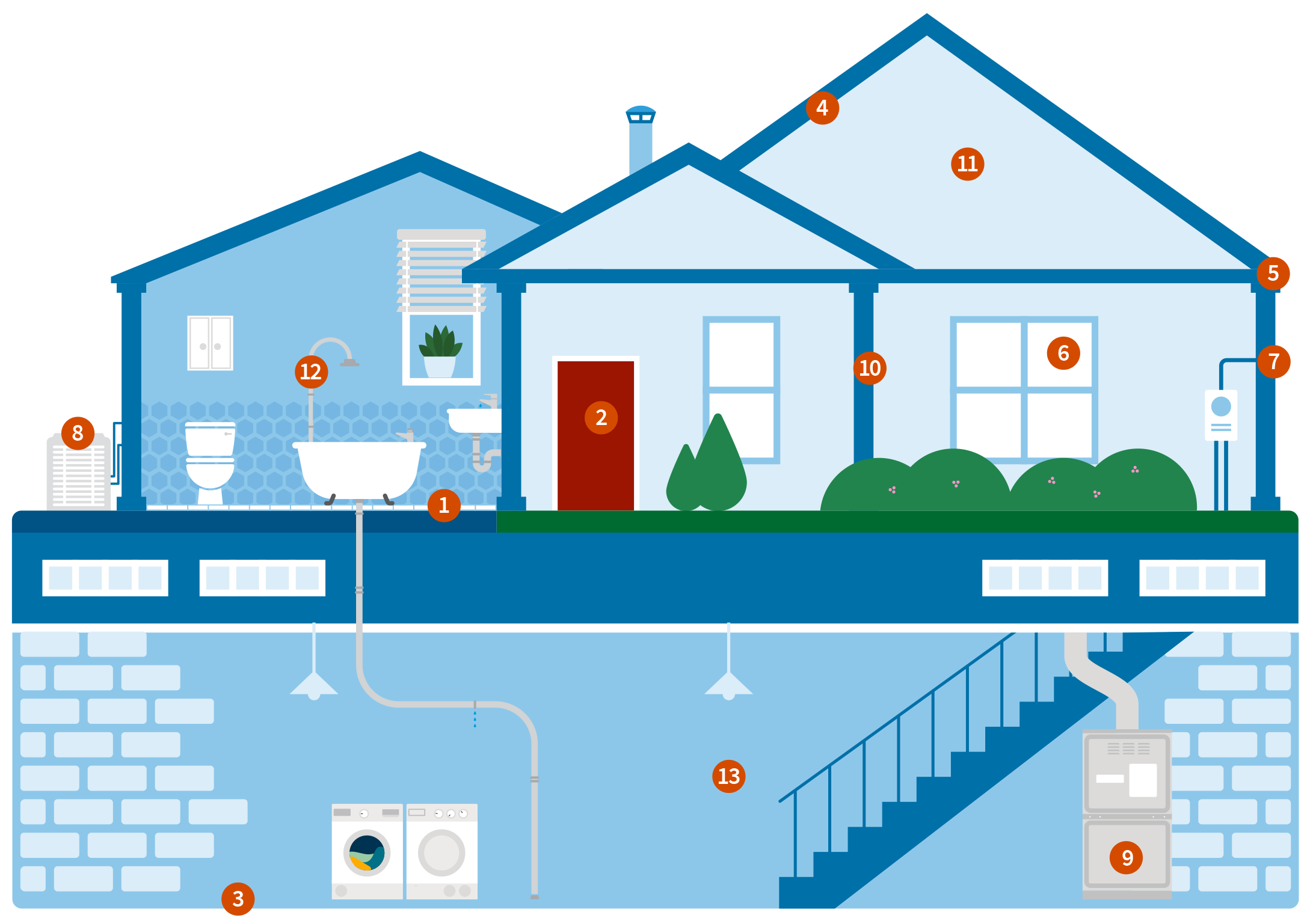Your Home Inspection Tour
A home inspection provides useful information about the state of a home — and can alert you to potential problems. Use this guide as a quick reference to the areas checked during a home inspection.
Your home inspector will likely focus on 13 key areas

Are there cracks in the basement or signs of water intrusion that would indicate a structural concern, improper water management, etc.?



